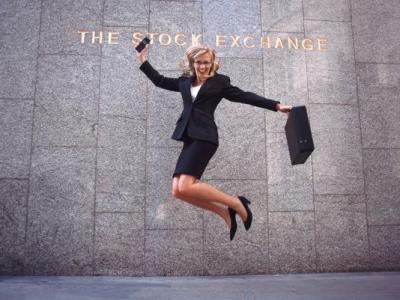Moving back into the market
Written and accurate as at: Feb 03, 2016 Current Stats & Facts

Video Link
Video Link: Morningstar's Christine St Anne and David Simon
Video Transcript
Christine St Anne: Today we welcome back Westpac's David Simon to talk about investment issues affecting investors. This time he takes a look at moving back into the market. David, welcome.
David Simon: Thanks, Christine. Good to be here.
St Anne: David, the share markets have rallied of late. Is it wise for investors to move back into the market?
Simon: Look, I mean, the market certainly has had a rally of over 20 per cent for the last 12 months, which is certainly a wonderful level of performance. However, if we look back to where the market was back in 2007, the market is still (perilously) below those levels. I mean, to the point that if the market would have increased by almost 40 per cent overnight, it still wouldn’t be at the levels it was in 2007, and there are several reasons why that’s the case. So even though from a macro point of view the market does generally look undervalued when you compare it to how the US and how the counterparts have performed in contrast to ours, there are several reasons why our market is still well-below its peaks. But in saying that, it certainly is an attractive asset class, especially when you consider alternative such as cash and bonds. But people should be vary, should be cautious. Volatility is certainly not yet over. So it’s important to adopt some sound principles, aspects such as dollar-cost averaging. So rather than just investing in lump sum and investing in installments is certainly attractive certainly for long-term investors.
St Anne: David, you mentioned undervalued. So what sort of sectors should investors look at?
Simon: There are certainly several sectors that remain attractive. We really do like telecommunication is one example. The main reason there is the main drivers continue to dominate the market and with increasing demand and continued innovation that's certainly an attractive sector. Other sectors, such as energy, again, that's attractive. The developing economies, such as India and China, will continue to growth and that will fuel demand for energy resources. So we also like the energy sector.
Other sectors that we like include industrials as well. So the likely increase and robustness of Capex will continue to add growth to that sector. So these are the sectors that we do like. We also like consumer discretionaries, which are largely made up of media and some gaming stocks. These particular stocks and that particular sector has actually been very resilient during tough market conditions and we like those – we continue to like those sectors.
St Anne: Shares, of course, have been a popular asset class, but what about fixed income? Does that still play a big role?
Simon: It is. Fixed income is certainly a very important area. Just like any diversified portfolio, which encompasses shares and property, cash, fixed interest is still an important component. However, investors need to be very wary of fixed income. It’s a very vague asset class and in the world of fixed income there are some tremendous overvaluations in certain areas of fixed income. So investors should be very, very cautious of what fixed income asset they actually invest in. Fixed income assets have its own level of volatility and some economists feel that there is a bubble that’s burning in that class. So it’s important to be wary, just like any asset class, and just make sure that you’re picking on fundamental quality around yield and quality of the issuer.
St Anne: So, David, what sort of fixed income assets do you like?
Simon: There is a whole range of different fixed income assets. There is also a different tiering in fixed income. So you can have Tier 1 capital, which is primarily the most safest type of fixed income asset, all the way down to hybrids and emerging market fixed income. You find that depending on where you sit on the risk profile, so if you’re really high risk, you typically get a higher yield or higher outcome of income. However, you are putting the capital at greater risk than if you were staking a much better quality fixed income asset that typically would pay a lower yield, but the capital would be safer. So, look, we – it does come down to how an investor feels, what their portfolio looks like, what their overall risk profile is, are they comfortable with excessive risk, do they see that the portfolio can cope and handle that type of risk, or are they more defensive and like a lower yield, but the comfort of having security over their capital. So it’s such a wide range that we believe overall diversification within that sector is particularly important and diversification not just within the asset class itself, but within the actual range of fixed income assets as well.
St Anne: David, wonderful seeing you again. Thanks for your insights.
Simon: No worries. Thanks, Christine.










